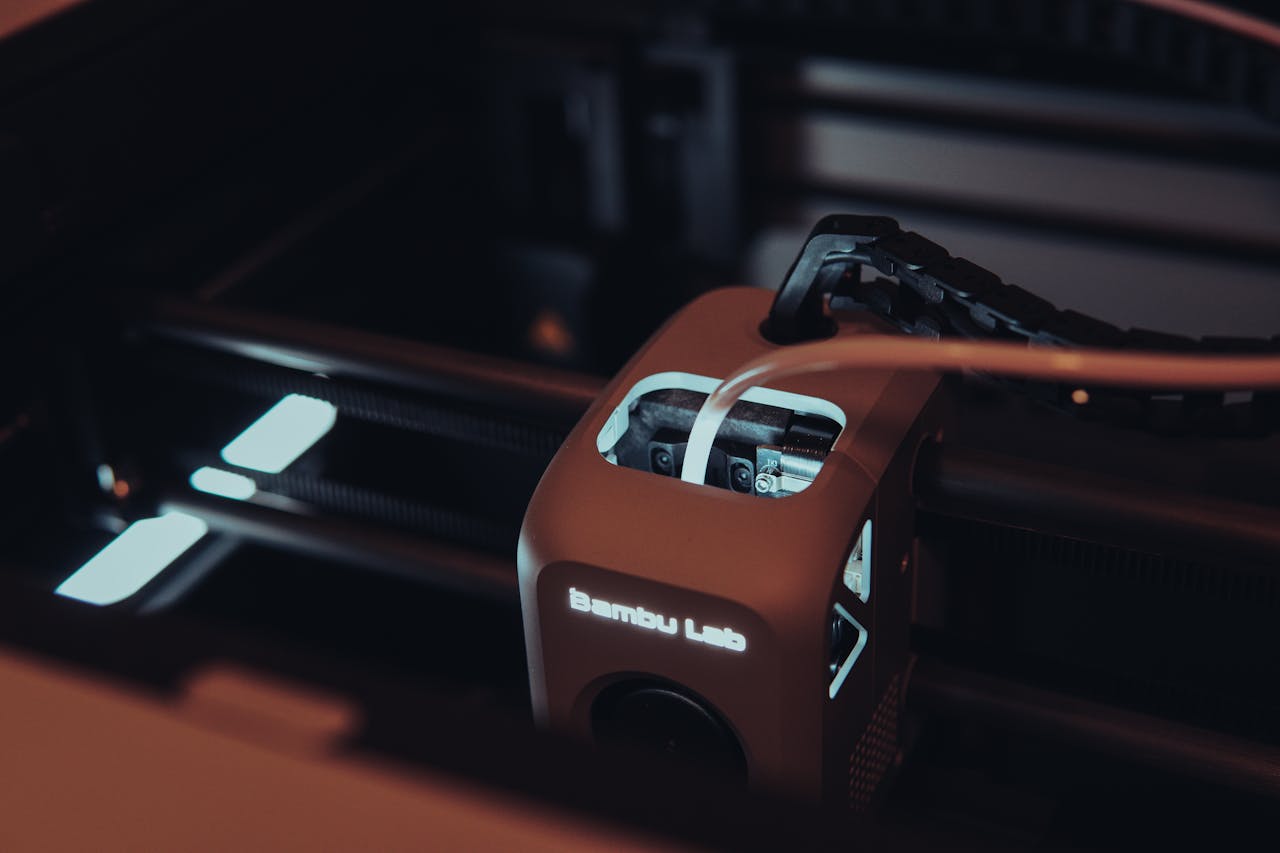Calibrating Your 3D Printer: Bed Leveling, E-Steps, and Flow Rate Explained

Calibration is the quiet backbone of reliable 3D printing. I see it all the time — someone buys a new printer, sets it up, and it works beautifully for a few weeks. Then the complaints start: uneven layers, gaps in walls, or prints that don’t quite fit together. Nine times out of ten, the problem isn’t the machine — it’s calibration.
I do calibration work often for customers and schools here in South Jersey, and the difference it makes is dramatic. Bed leveling ensures the first layer sticks, e-steps control how much plastic gets pushed through the nozzle, and flow rate fine-tunes the quality of each line. Together, they turn a “good enough” printer into a dependable tool.
In this guide, we’ll break down the three most important calibration steps — bed leveling, e-steps, and flow rate — why they matter, and how to get them right. If you’re tired of inconsistent results or managing a classroom fleet where every printer behaves differently, this post will give you the clarity and steps you need.
Section 1: Bed Leveling — The Foundation of Calibration
If your bed isn’t level, nothing else you do will matter. The first layer is the foundation of every print, and when it’s too far from the nozzle, prints won’t stick. Too close, and you’ll grind filament into the plate or clog your nozzle.
Why it matters:
- Poor adhesion leads to failed prints halfway through
- Inconsistent layer height causes weak parts
- Teachers and students lose trust in the printer after repeated failures
How to do it right:
- For manual leveling, slide a piece of paper between the nozzle and bed at each corner — you want slight resistance.
- If your printer has auto-leveling, make sure it’s properly calibrated and re-run it after any major move.
- Check bed level weekly in schools or shared environments, since printers get bumped and adjusted often.
A well-leveled bed is the single biggest factor in whether your prints succeed or fail. It’s why I always start there when setting up or troubleshooting printers for South Jersey classrooms and home users alike.
Section 2: Calibrating E-Steps for Accurate Extrusion
E-steps, short for extruder steps, tell your printer how much filament to push through for every command it receives. If these aren’t calibrated, you’ll either under-extrude (thin, weak walls, gaps, poor layer bonding) or over-extrude (bulging walls, messy corners, wasted filament).
Why it matters:
- Ensures every part of your print uses the right amount of material
- Prevents inconsistent walls and fragile parts
- Saves filament by avoiding over-extrusion
- Improves reliability across multiple printers in a school fleet
How to calibrate:
- Heat your nozzle to printing temperature.
- Mark 120 mm of filament above the extruder with a marker.
- Tell the printer to extrude 100 mm.
- Measure how much filament actually moved.
- If it only pulled 95 mm, you’re under-extruding.
- If it pulled 105 mm, you’re over-extruding.
- Update your e-steps value in the printer firmware or slicer until 100 mm equals 100 mm.
For South Jersey schools running multiple printers, I recommend standardizing this process so every machine behaves consistently. That way, a file sliced on one printer won’t behave unpredictably on another.
Section 3: Flow Rate Calibration for Fine-Tuning
Once your e-steps are dialed in, flow rate is the final adjustment that makes prints look crisp and fit together properly. Think of it as “real-world tuning” — even if your extruder pushes the right amount of filament, small variances in filament brand, nozzle wear, or slicer settings can throw things off.
Why it matters:
- Prevents gaps between walls when flow is too low
- Stops blobs, bulging corners, and elephant’s foot when flow is too high
- Critical for accurate dimensions when printing parts that need to fit together
- Gives a smoother surface finish, especially for visible projects like models or art pieces
How to calibrate:
- Print a single-wall cube using your normal slicer settings.
- Measure the wall thickness with digital calipers.
- Compare it to the wall thickness in your slicer (e.g., 0.40 mm for a 0.4 mm nozzle).
- If the print measures thicker than expected, reduce flow. If it’s thinner, increase flow.
- Update the flow rate percentage in your slicer until printed walls match the intended thickness.
For schools in South Jersey, I often show staff how a simple flow test can eliminate headaches across an entire printer fleet. Once dialed in, even entry-level printers can produce reliable, professional-quality results day after day.
Conclusion — Calibration Builds Confidence in 3D Printing
When prints start failing, many people assume the machine itself is unreliable. In reality, most issues come down to calibration. By taking time to level the bed, set e-steps correctly, and fine-tune flow rate, you’ll transform your printer from “temperamental” to dependable.
For South Jersey schools managing fleets of machines, this consistency is even more important. A well-calibrated printer means teachers can trust their projects to run, students see fewer failed prints, and IT staff get fewer troubleshooting tickets. For home users, it’s the difference between wasted filament and professional-looking results.
At 3D Printing by Bokey, I’ve helped dozens of schools and hobbyists get their printers dialed in — and once calibration becomes routine, the frustration disappears. Whether you’re an artist in Trenton, a hobbyist in Ocean County, or an IT coordinator in Camden County, these small steps pay off in stronger, cleaner, and more reliable prints.
Internal linking prompts:
- When talking about bed leveling and adhesion, link back to: Why Belt Tension Matters More Than You Think.
- When covering nozzle maintenance during calibration, link to: How to Tell If Your 3D Printer Nozzle Is Clogged and What to Do About It.
.jpg)

.jpg)